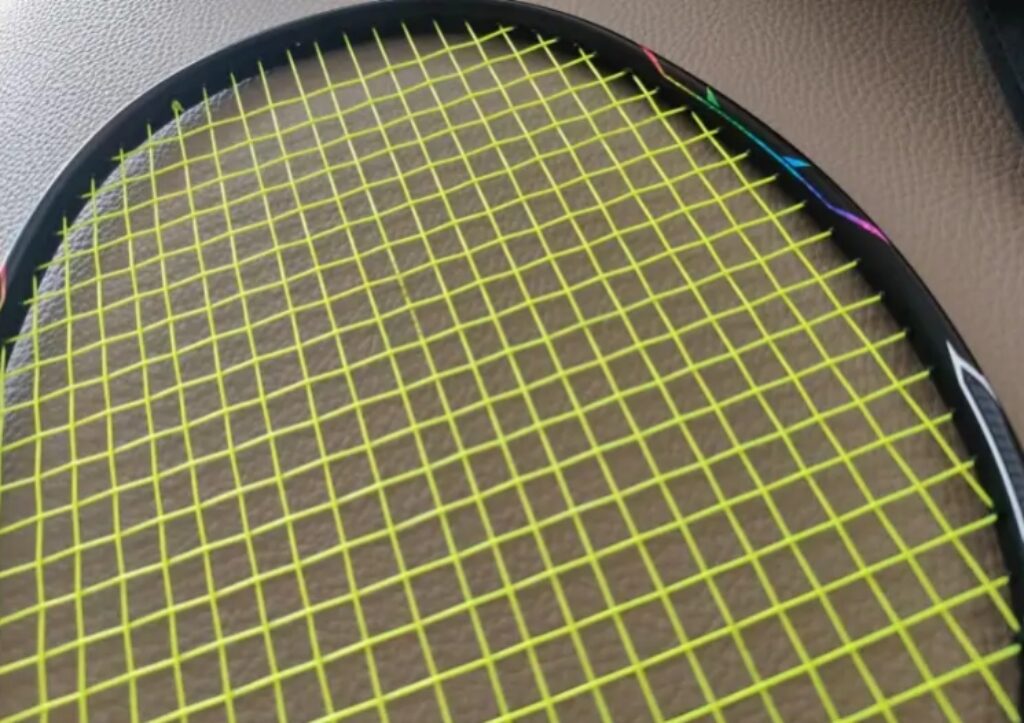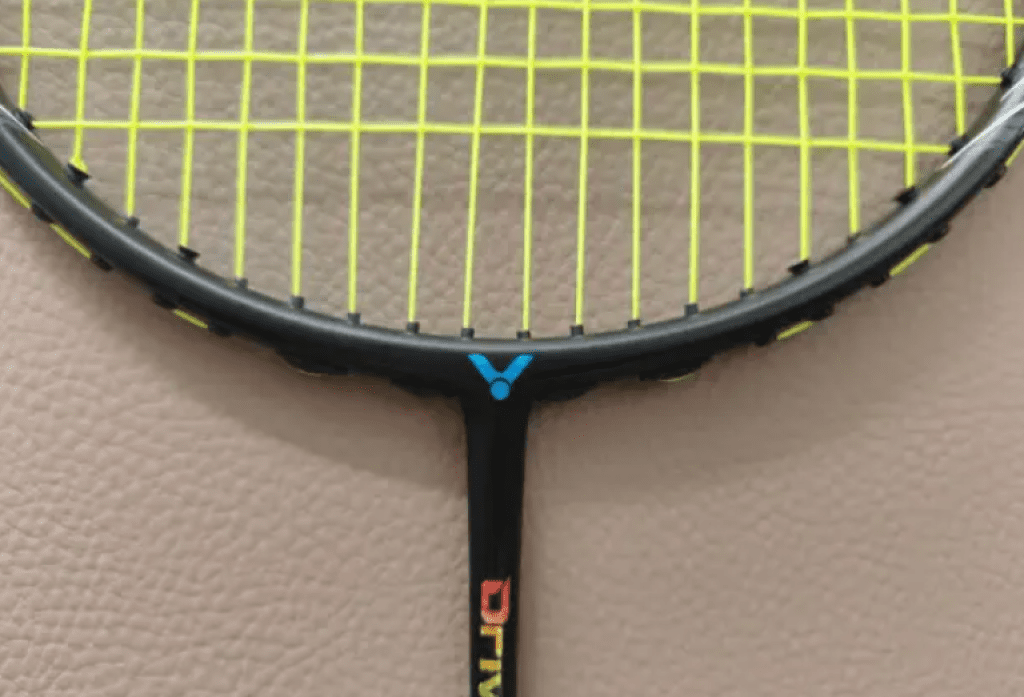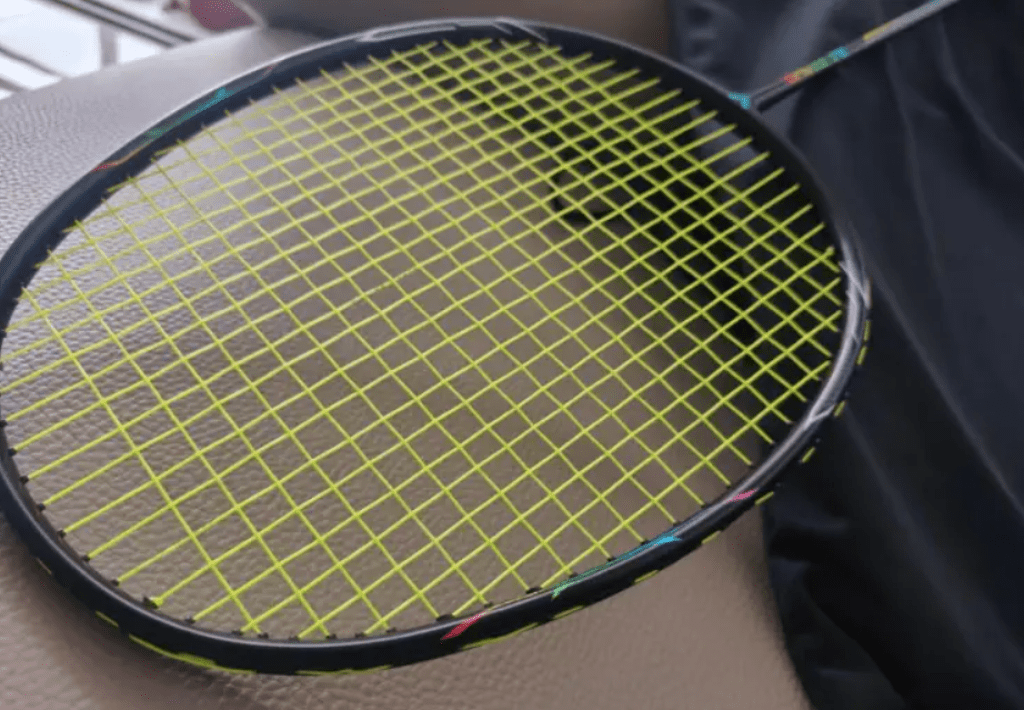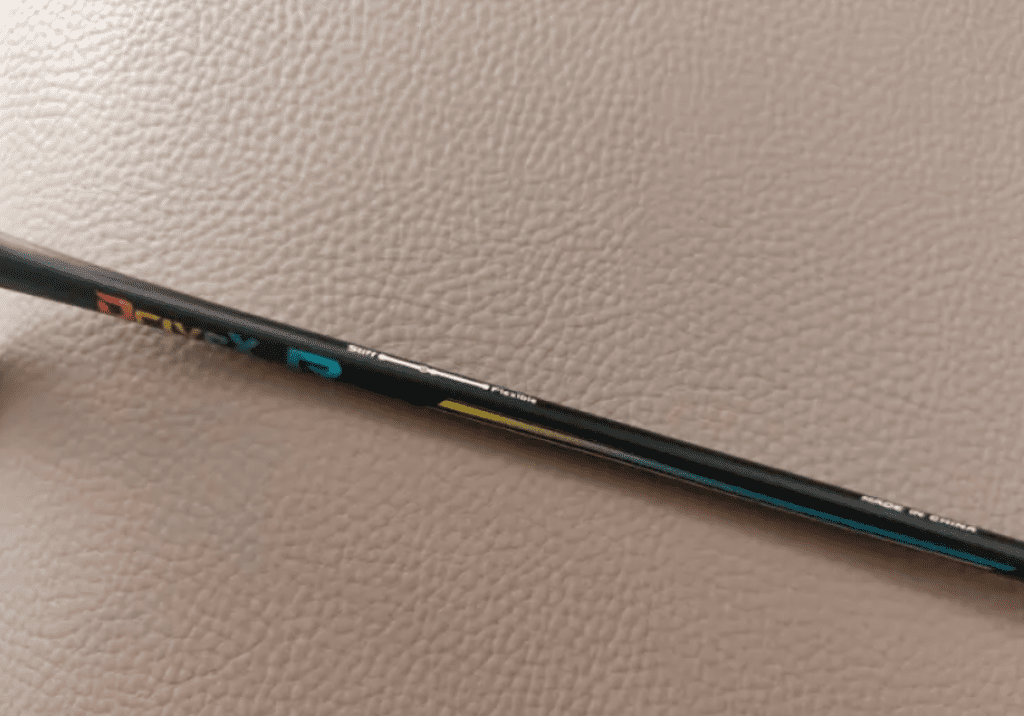Striking while the iron is hot, let’s continue with another racket named “R,” which is currently available at a significant discount. The marketing and subsequent market performance of this racket feel very familiar to me. First, I recently compared the TK-R and Yu-R using the same strings on the same day, which allowed for a rigorous comparison. Second, it’s not surprising to see a brand suddenly release an outlier model that doesn’t fit the series naming conventions and then encounter poor reception.
However, considering the recent decline in curiosity-driven content quality and readership, I’ll give a straightforward conclusion: If the retailer can offer it for just over 400, that would be a good deal. It’s worth picking up if the opportunity arises.

Specifications: 5UG6, unstrung weight 89.61g, balance point 287mm, 6.6mm shaft, length 210mm, moderate stiffness, power hexagonal frame, 76-hole string bed, 9-3 o’clock string grooves, warranty 27 pounds, strung with 26-28lbs BS710.
I have already mentioned my criticisms of the Yu-R in the previous review, so I won’t repeat them here. The sparse color-changing stickers on the frame seem rather half-hearted. However, the black base paint has a strong visual convergence effect, making the racket appear very slim, especially with the 6.6mm shaft that looks fragile but is actually quite sleek and highlights the rainbow-colored R logo.

There’s not much to describe about the appearance, but the configuration and positioning are quite interesting. Priced at 1080, it just enters the high-end category. Material-wise, it lacks the TR reinforcement found in the higher-end Yu 7K, which results in precise craftsmanship. Additionally, like the TK-R, this racket is only available in 4U/5U specifications, positioning it as a “quasi-high-end” product.
This racket was among the early adopters of the suspended handle, and though it was not the transparent cone cap version, it represents an early adoption of Yu 9X technology. Whether this will become a quality issue like the Jinx is still uncertain.

The initial feel of the racket is satisfactory, with minimal difficulty and easy adaptation. It’s a pleasant high-end product. I have always been fond of the high-end frames in the Yu series for their high tolerance, swing speed, and stability, even though the series is relatively niche. The sweet spot provides a light and responsive feel, making it easier to find the rhythm in net play and flat drives, with the ability to deform the shaft with power. The racket’s elasticity is top-notch, and the feedback is relatively direct, with the suspended handle providing good shock absorption and clear feedback.

When pushed to its limits, I found the Yu-R to be almost like a lighter, softer version of the Yu 7K, even responding more crisply than the Yu 8S. The absence of TR carbon affects the face’s elasticity and resilience, but the shaft’s explosiveness, sweet spot positioning, and ball feel are comparable to the 7K. When I tested the 7K, I considered it a strongly offensive Yu racket, while the 5U R is a speed-oriented Yu racket.
The racket performs smoothly at the front court, with effortless net play and strong agility, similar to an extension of your arm. The 210mm shaft length enhances confidence in the front-to-mid court flat drives, providing a sensation of speed and continuity. It significantly improves performance in passive situations, eliminating concerns about handling wide angles or insufficient elasticity for high-quality returns.

Similarly, although part of the Yu series, its offensive performance can be compared to the less common HX AIR. While the 5U racket lacks the heavy feel for powerful smashes needed by less experienced players, its shaft elasticity allows for quick speeds on smashes and flat drives, producing a sharp cracking sound. Speedy shots and quick returns are its characteristics, and after meeting these requirements, I am willing to sacrifice precision and control for the advantage of swift, continuous attacks that overwhelm opponents. The 6.6mm short shaft is reliable and crucial to the racket’s offensive performance.
So, why isn’t it selling well or receiving good reviews? I immediately think of the situation with the Yu 7K, where both were similarly priced at their lowest and the 7K was a genuine high-end racket with better specs. Both rackets’ actual experiences were more influenced by weight distribution, offering good value for money. With the 7K nearly sold out, the Yu-R has become the “victim” of the situation.








